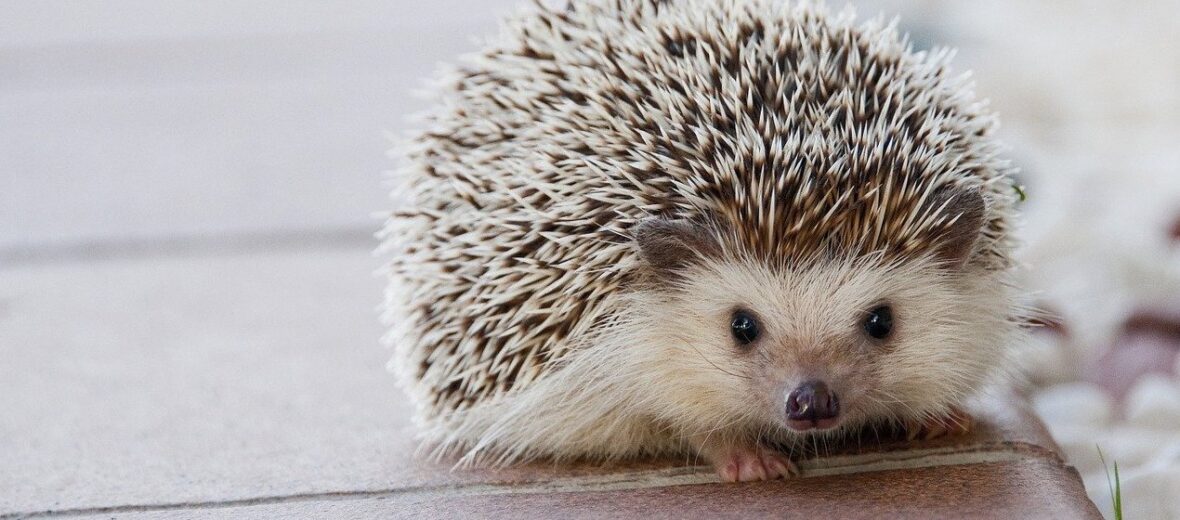
It’s the hedgehog. They are small, they have short legs, a cute, cone-shaped face, and they roll into an adorable little ball of spikes when threatened. These critters get their namesake due to the pig-like squeals, snorts, and grunts they make while foraging for food in bushes and hedges. There are 17 known species of hedgehog and they are typically found in Europe, Asia, and Africa. However, they have been introduced into new areas like New Zealand and the United States. In the wild they prefer forests, savannas, deserts, scrublands, and suburban gardens.
First the Stats…
Scientific name: Erinaceinae
Weight: Up to 2.6 lbs.
Length: Up to 12 inches
Lifespan: Up to 5 years
Now on to the Facts!
1.) A group of hedgies is called an array or a prickle.
2.) Hedgehogs are illegal to keep in many parts of the U.S. as they can be an invasive species.
3.) These little critters have been around for approximately 58 million years!
4.) Their spines are made from keratin and number in excess of 6,000! They rotate their spines out each year, much like the way other mammals shed fur.
5.) Sight isn’t their strongest sense. But their sense of smell and hearing are quite acute.
But wait, there’s more on the hedgehog!
6.) Hedgehogs are nocturnal (active at night).
7.) Unlike porcupine quills, they are not barbed. And, no, they aren’t venomous.
Did you know…?
These cute animals are quite immune to most snake venom, but succumb to a large enough dose.
8.) Baby hedgehogs are called hoglets. How cute is that?
9.) Contrary to popular belief, they can’t roll around while tucked into a ball.
10.) When exposed to certain bad, pungent, or new aromas or tastes, they will self-anoint their quills with a frothy saliva. No one knows for sure why they do this.
But wait, there’s still more on the hedgehog!
11.) Sleeping comes natural to them as they do so for about 18 hours a day, like ferrets!
Did you know…?
They are fast! A hedgehog can run up to 6 feet per second!
12.) The African pygmy hedgehog is the most frequently kept as a pet.
13.) It is believed that the first domesticated hedgehogs were kept around 4 B.C.
14.) They eat a wide variety of fruit, fungi, insects, centipedes, snails, worms, frogs, mice, eggs, birds, reptiles, roots, and even snakes. But, on a side note, they are lactose intolerant.
15.) Females birth up to 6 pups, once a year.
16.) Us humans can get a fungal skin infection from hedgies caused by Trichophyton erinacei, aka ringworm. Other infections associated with hedgehogs include bacteria like mycobacteria and salmonella. Frequent baths and a clean environment curb these infection potentials.
Now a Short Hedgehog Video!
Also, check out the Critter Science YouTube channel. Videos added frequently!
Want to suggest a critter for me to write about? Let me know here.




Leave a Reply